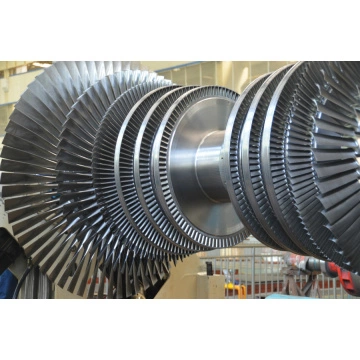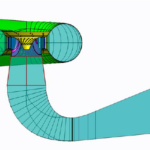| Impulse turbine | Impulse reaction turbine |
| 01. Steam expands completely in the nozzle. | 01. Steam expands partially in the moving blades and partially in the fixed blades. |
| 02. Pressure of steam remains constant during its flow through the blade passages. | 02. Pressure of steam is not constant during its flow through moving and fixed blade passages. |
| 03. Steam flow over the blades is uniform due to symmetrical blade profile. | 03. Steam flow over the blades varies due to aerofoil section (unsymmetrical) blade profile. |
| 04. Due to complete pressure drop in the nozzle, steam velocity and rotor speed are very high, resulting in centrifugal stresses acting on the blades. This may result in blade failure. | 04. Since pressure drop occurs partially in the fixed blades, steam velocity and rotor speed are not high. Hence stresses developed are less. |
| 05. The initial and final velocity of steam over the blades is constant or the final relative velocity can never be greater than the initial value, i.e. Vr₁ ≥ Vr₂ | 05. The initial and final relative velocities over the blades are not constant and the final relative velocity is always greater than the initial relative velocity. |
| 06. As pressure drop in each stage is large, number of stages required is less. Hence turbine is compact. | 06. Due to small pressure drop in each stage, it requires large number of stages. Hence size of turbine is bigger. |
| 07. Part load efficiency of turbine is poor. | 07. Part time efficiency of the turbine is good due to more efficient blades. |
| 08. Speed of turbine is very high and hence requires compounding. | 08. Speed of turbine is low and hence does not require compounding. |
| 09. Turbine is compact and hence occupies less space. | 09. Turbine is bigger and hence requires more space. |
| 10. It is installed in small capacity power plants. | 10. It is generally used in medium and large capacity power plants. |

Posted inHydraulic Machines

